Main Content
2017 Summer Intern Research Symposium
The 2017 Center for Urban Waters Summer Intern Research Symposium was held on September 15, 2017. This event is the culmination of our summer internship program, with interns presenting their work on a variety of environmental topics: fecal coliform, microplastics, insecticides, arsenic detection, pre-spawn mortality in Coho salmon, air monitoring, collaborative partnerships, and summer streamflows.

| Time | Speaker | Advisor |
|---|---|---|
| 12:30 - 12:50 | Claire Wiley | Nick Georgiadis |
| 12:50 - 1:10 | Shannon Black | Julie Masura |
| 1:10 - 1:30 | Jessica Kelsey | Julie Masura |
| 1:30 - 1:50 | Sarah Stewart | Tom Koontz |
| 1:50 - 2:10 | Michael Sears | Robin Agnew-Evans |
| 2:10 - 2:30 | Alyssa Kraft | John Stark |
| 2:30 - 3:00 | Kim Oliva-Membreno and Joey Bell | Andy James |
| 3:00 - 3:20 | BREAK | |
| 3:20 - 3:40 | Marion LaRocque | David Hirschberg |
| 3:40 - 4:00 | Zoey Shisler and Brendan Studebaker | David Hirschberg |
| 4:00 - 4:20 | Christopher Wu | Ed Koloziej |
| 4:20 - 4:40 | Peter Lin | Ed Koloziej |
| 5:00 - 7:00 | Reception at the Swiss | |
Meet the 2017 Center for Urban Waters Summer Interns
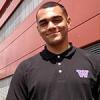
Joey Bell
arrow_drop_down_circle
Joey Bell
Mentor: Andy James
Restoring Shellfish Beds in the Puget Sound
We are collecting water samples at different creeks in King county and Pierce county that lead to the Puget Sound. Our goal is to identify creeks with high concentrations of fecal coliform so that those creeks can be treated and the shellfish in the Puget Sound can be harvested once again.
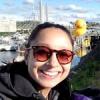
Shannon Black
arrow_drop_down_circle
Shannon Black
Mentor: Julie Masura
Microplastics Sampling
For our research project, we are sampling microplastics in the Puyallup River Watershed. We are currently determining the best method to sample in freshwater, as the majority of plastics research is in the ocean. We will be sampling at the top of the watershed near the glaciers and sampling down through the Puyallup River Watershed to determine point sources of plastics and sampling approximately every 5 miles of the Puyallup River.
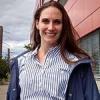
Jessica Kelsey
arrow_drop_down_circle
Jessica Kelsey
Mentor: Julie Masura
Microplastics Sampling
For our research project, we are sampling microplastics in the Puyallup River Watershed. We are currently determining the best method to sample in freshwater, as the majority of plastics research is in the ocean. We will be sampling at the top of the watershed near the glaciers and sampling down through the Puyallup River Watershed to determine point sources of plastics and sampling approximately every 5 miles of the Puyallup River.
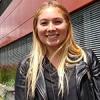
Alyssa Kraft
arrow_drop_down_circle
Alyssa Kraft
Mentor: John Stark
Neonicotinoid Insecticide Effects on C. dubia
I’m working with Claire Duchet, a postdoctoral fellow from France. I am assisting her with her research project that examines the effects of a group of insecticides called neonicotinoids on an organism called Ceriodaphnia dubia. The specific neonicotinoids being used are Clothianidin, Imidacloprid, Thiamethoxam and a mix of all three. The experiment involves subjecting adult and neonate C. dubia to specific concentrations of the pesticides listed above and examine the survival/mortality rate using a population study. I am also assisting her and her colleague on examining the effects of stormwater runoff on C. dubia. In the future, I may also be assisting a few researchers in the fish lab, with their experiments on Coho salmon.
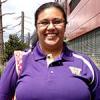
Marion LaRocque
arrow_drop_down_circle
Marion LaRocque
Mentor: David Hirschberg
Modeling the Health Effects of Arsenic
My project is to model concentrations arsenic in the South Sound through groundwater and soil over the last two decades and the relationship with the number of cases of hospitalization for arsenic poisoning. Our goal is to ultimately determine the impact on healthcare and thus show how an arsenic detecting machine could be used as a tool in determining arsenic concentrations in high population areas.
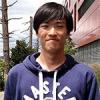
Peter Lin
arrow_drop_down_circle
Peter Lin
Mentor: Ed Kolodziej
Pre-spawn Mortality in Coho Salmon
The project that I am helping with is looking into the toxic compounds in stormwater runoff that leads to Pre-spawn Mortality of Coho Salmon. The goal is to identify specific compounds or mixtures in the stormwater that causes Pre-spawn Mortality and come up with solutions that can save Coho Salmon in urban streams. So far, we collected stormwater runoff from a DOT bioswale off WA-518 and currently running it through Q-TOF (high-resolution mass spectrometer) to identify the compounds in the runoff water.
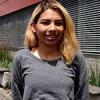
Kimberly Oliva-Membreno
arrow_drop_down_circle
Kimberly Oliva-Membreno
Mentor: Andy James
Restoring Shellfish Beds in the Puget Sound
We are collecting water samples at different creeks in King county and Pierce county that lead to the Puget Sound. Our goal is to identify creeks with high concentrations of fecal coliform so that those creeks can be treated and the shellfish in the Puget Sound can be harvested once again.
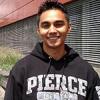
Michael Sears
arrow_drop_down_circle
Michael Sears
Mentor: Robin Evans-Agnew
Air Monitoring System for the CUW
I am working with Dr. Robin Evans-Agnew to establish an air monitoring system on the roof of the CUW with the intent of conducting a long-term citizen science project. This would not only allow people in the Tacoma Tideflats to participate in air data sampling but it will also provide supplemental data concerning air pollution in the Tideflats. The air monitoring system will not be just a fixed station of instruments. Instead, it will be the network by which the citizen science project will be conducted. This will include obtaining mobile air samplers, hosting community awareness events, and partnering with coalitions in Tacoma.
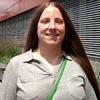
Melissa Stebbins
arrow_drop_down_circle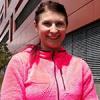
Sara Stewart
arrow_drop_down_circle
Sara Stewart
Mentor: Tom Koontz
Utilization of Science Within Collaborative Partnerships
Our research is focused on how collaborative partnerships around the Puget Sound utilize science in their decision-making. We are contacting partnerships around the Sound, scheduling focus-group interviews with members, and attending their partnership meetings. This will allow us to have a holistic approach to understanding how environmental groups function and how they utilize science to drive their programs.
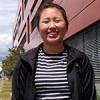
Claire Wiley
arrow_drop_down_circle
Claire Wiley
Mentor: Nick Georgiadis
Streamflow Variation
We are looking at streamflows and how they affect their surrounding areas. Some of this has involved reading journals and papers written by academics who have dealt with streamflow, but most of it has involved sifting through the data that exists already (provided by the USGS). We basically want to take this data and find simple ways to inform the public about how streamflow variation affect local characteristics. Recently, I have been trying to summarize the data annually to see if there is a trend among years. From here, I am working on taking these trends and compiling them with their mean streamflow over the entire time period along with the correlation coefficient. Having this data in a compact way will allow us to compare streams to each other as well as seeing the effect of individual streamflows over time.
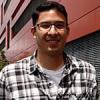
Christopher Wu
arrow_drop_down_circle
Christopher Wu
Mentor: Ed Kolodziej
Pre-spawn Mortality in Coho Salmon
The research project I am working on involves the phenomenon of pre-spawn mortality among Coho salmon in urban streams. Studies have found that there is a correlation between the percentage of impermeable surface cover on a watershed and the mortality rate in spawning salmon populations. Strikingly, in some streams, the mortality rate is high enough that the Coho salmon are predicted to go extinct within a matter of decades, if not sooner. The question, then, that we are trying to answer is: what compound in urban stormwater runoff is killing Coho salmon prior to them spawning? Using the Quadrupole Time of Flight Liquid Chromatography/ Mass Spectrometer, we have been analyzing stormwater samples and fish tissue extractions in the hope of identifying the compound(s) that have been causing pre-spawn mortality in Coho salmon.
Internship overview (as advertised for 2017 cycle)
The University of Washington Tacoma has several internships for energetic undergraduate students at the Center for Urban Waters, a collaboration among UW Tacoma, the City of Tacoma, and the Puget Sound Partnership. These paid positions are an excellent opportunity to gain valuable research experience working side-by-side with environmental professionals engaged in significant regional projects. Currently-enrolled students and recent graduates with strengths in fields such as environmental science and engineering, social sciences, public health, mathematics, GIS, and computer science are encouraged to apply.
Eligibility and Expectations
The Urban Waters Summer Intern Program is open to current undergraduate students and recent graduates from any UW campus, as well as other colleges and universities. Interns must commit to working a minimum of 160 hours at $15/hour over the course of the summer (mid June – mid September). Interns will be required to attend an orientation on June 13th. The summer experience will conclude with an opportunity for interns to present the results of their work on September 15th. Interns are responsible for their own transportation to and from the Center for Urban Waters in Tacoma.
To Apply
The application period has closed. Interns have been selected.
Send current resume, and a cover letter describing your interest in the position, via e-mail to urbanh2o@uw.edu. Please indicate which of the specific potential projects listed below you are most interested in. Review of applications will begin after May 22, 2017.
Position Descriptions
Interns will be placed within a number of ongoing research activities, including:
- Environmental Forensics: tracking sources of pollutants to Puget Sound
- Modeling loadings of polycyclic aromatic hydrocarbons to Puget Sound
- Multivariate analysis of stormwater data
- Characterizing environmental microbiomes in and around Tacoma
- Application of mass spectrometry to discover toxic agents in stormwater
- Use of science in Puget Sound ecosystem restoration policies
- Exploring markers for pollutants in urban air in community located near industrial facilities
- Detection of microplastics in Puget Sound water and biota
Specific duties will vary depending on the project to which an intern is assigned but may include work in a laboratory, office, or outdoor setting. Projects are not limited to the ones described above.
